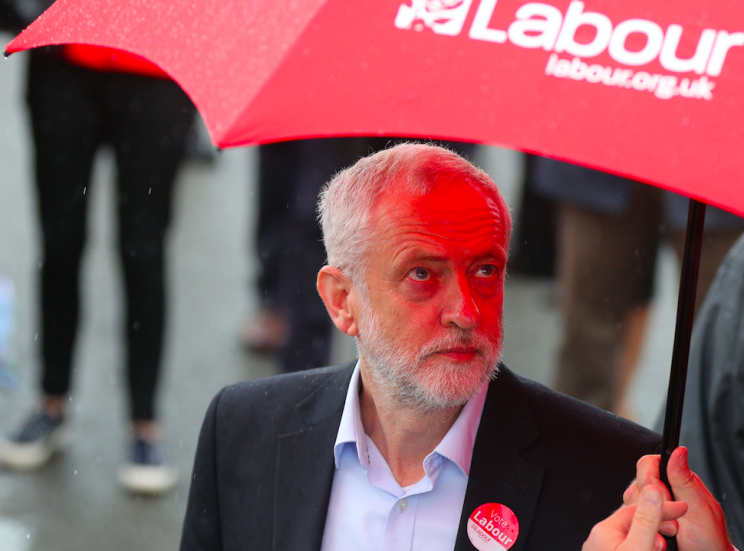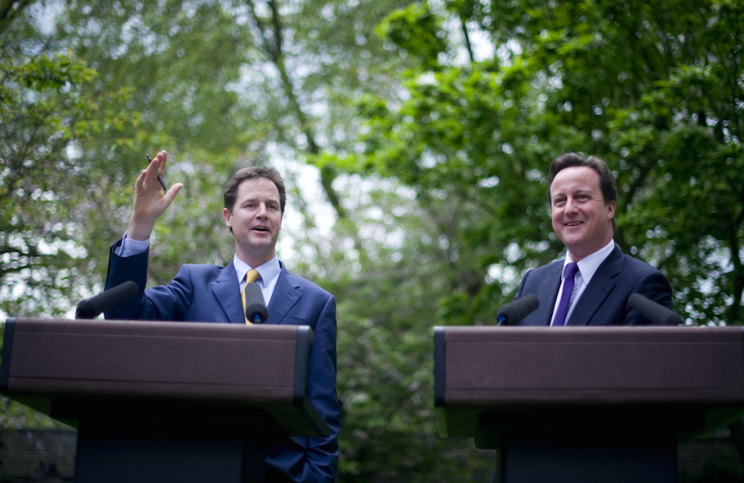What is a hung parliament - and how likely is it to happen?
Britain could be heading for a hung parliament after the general election on Thursday, the latest polling has forecast.
Two polls on Tuesday said that the battle for Downing Street between the Conservative and Labour parties had become incredibly tight.
A Survation poll for ITV’s Good Morning Britain gives the Tories a slender one-point lead, with prime minister Theresa May’s party on 41.5% compared to Labour’s 40.4%.
The Liberal Democrats are back on 6% and Ukip have 3%.
YouGov, which has been publishing daily voting intentions, predicts the Conservatives will achieve 42% of the vote with Jeremy Corbyn’s Labour party on 38%.
YouGov 2017 election model estimates (6 June)
CON 42%, 265-342 seats
LAB 38%, 230-300 seats
For full results visit: https://t.co/1eYpO4jRQq pic.twitter.com/QIOERg6ozN— YouGov (@YouGov) June 6, 2017
Crucially, however, it estimates the Tories will only win 304 seats in the House of Commons, leaving them short of an overall majority.
And if that prediction did become a reality – although all polls should be served with a large dollop of salt after the EU referendum and the 2015 general election – that would leave the UK with a hung parliament.
GENERAL ELECTION ’17: LATEST NEWS AND POLITICAL ANALYSIS FROM YAHOO UK
Three times leaders called snap elections – and it backfired.
Theresa May has revealed ‘the naughtiest thing she’s ever done’
Jeremy Corbyn could become the first bearded prime minister in a century
Corbyn ‘must win or go’ say Labour figures plotting leadership rules change
So, according to some pollsters, at least, the likelihood of a hung parliament is high, but what is it and what will it mean?
WHAT IS A HUNG PARLIAMENT?
A hung parliament is when no party has secured enough seats at the general election for an outright majority in the Commons.
There are 650 seats, so, in theory, an overall majority means winning 326 seats. However, because of Sinn Féin’s refusal to attend parliament, the reality is that 323 seats is the magic figure.
If none of the parties reach that mark on Thursday, Theresa May will remain prime minister until it is decided who is best placed to try to form a new government.
WHO WOULD FORM A GOVERNMENT?
Cabinet rules say that the incumbent prime minister is entitled to try to form a government and stay in office until parliament meets after the election, on June 13.

However, if it becomes clear the incumbent prime minister is incapable of forming a new government, then they are expected to resign.
If that happened in this case, and Mrs May resigned, it would then be up to Mr Corbyn to form a government.
WHAT ARE THE OPTIONS?
There have been six hung parliaments since the beginning of the 20th century.
The last hung parliament was after the 2010 general election, which led to a majority coalition between the Conservatives and the Liberal Democrats.

But this isn’t the only kind of arrangement available. A new prime minister doesn’t have to rely on a formal coalition, and could broker ‘confidence and supply’ deals on specific issues with smaller parties.
Another option is a minority coalition, which involves two parties who together still don’t have a majority of seats, so go to the Commons to seek support for every vote.
A last-ditch resort is a minority government, where one party goes it alone without a working majority, but this is very unlikely as history dictates they don’t last long.
HOW LONG WOULD IT TAKE TO FORM A GOVERNMENT?
In 2010, the Conservatives and the Lib Dems formed a coalition in just five days, in a bid to calm unease in the financial markets, but many of their shared policies were later attacked.
If a coalition is on the cards this time, expect it to take a little longer to emerge.
WHAT IF A GOVERNMENT ISN’T FORMED?
If the Conservatives failed to form a coalition or agreement with one of the smaller parties, such as the Liberal Democrats, the SNP or the DUP, and also decided they didn’t want to go it alone, then another general election could be on the cards in a few months.
Yes, ANOTHER general election. Stranger things have happened…

 Yahoo News
Yahoo News 

